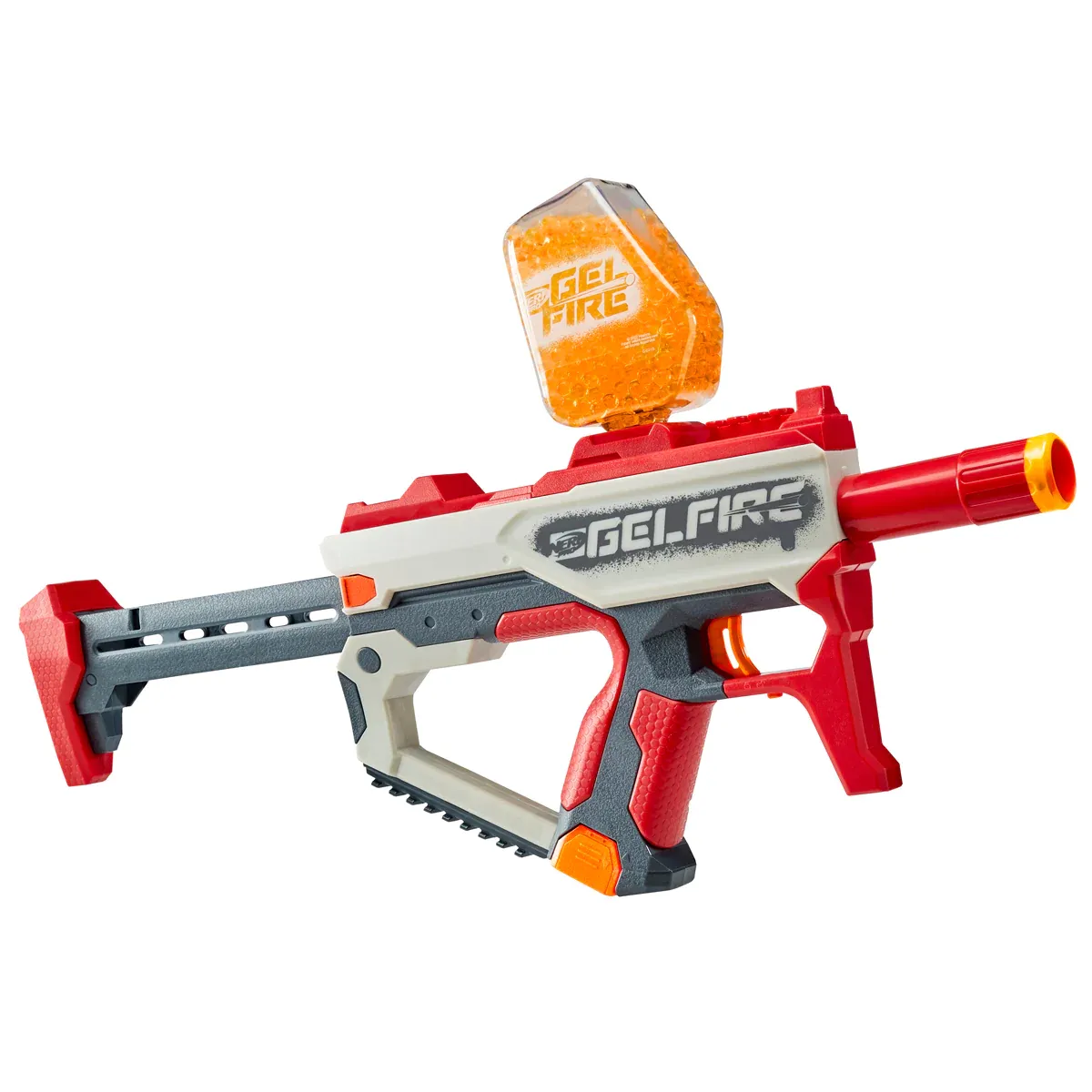Do Gel Blasters Hurt More Than Nerf Guns?
Gel blasters and Nerf guns are both popular toy guns that fire soft projectiles designed for recreational battles. But when it comes to how much they hurt, which blasters bring more pain: gel blasters or Nerf?
Introduction
Gel blasters rapidly fire small gel balls filled with water. They use spring power or batteries to launch the rounds at speeds of around 65-85 fps. The vibrantly colored blasters resemble real firearms.
Nerf guns use foam darts, discs, or Rival balls powered by manual cocking or batteries. Firing velocities range from 50-70 fps. Nerf guns have a distinct toy-like appearance.
While both are intended to be safe for kids and adults, gel blasters and Nerf guns have some differences when it comes to factors like impact force, pain, and potential for injury.
Gel Blasters vs Nerf Guns: Which Hurts More?
When shot from normal recreational distances, both gel blasters and Nerf guns are relatively safe and cause minimal pain. However, gel blasters do generally hurt more due to the denser, water-filled rounds. They cause more stinging and potential for bruising compared to softer Nerf darts.
At very close range, gel blasters also have the potential to cause eye injuries if eye protection is not worn. Nerf rarely causes eye damage due to the foam ammunition.
So while both can cause minor irritation and welts, overall gel blasters hurt more than Nerf guns during battle games due to the heavier, denser gel projectiles.
Gel Blasters
Gel blasters fire small spherical or cylindrical gel pellets containing a mixture of water and biodegradable polymer. Let’s look at how much gel blasters hurt and what factors affect the pain.
Factors that Affect the Pain of a Gel Blaster Shot
The amount of pain and potential for injury from a gel blaster depends on:
Firing Velocity
Higher muzzle velocity means more impact force. Most stock gel blasters shoot between 65-85 fps.
Size/Weight of Gel Ball
Larger, heavier rounds (8-12mm) cause more stinging than smaller (6mm) balls.
Distance of the Shot
Shots from over 30 feet away tend to have negligible pain. Under 5 feet risks welts.
Where the Body is Hit
Gel balls that strike exposed skin, faces or eyes cause more pain than body armor or thick clothing.
So heavier rounds, close distance, high velocities, and bare skin contact create more risk of pain and potential marking from gel blasters.
Nerf Guns
Nerf guns use foam darts, mega darts, discs, or dense Rival balls as ammunition. Here’s how much Nerf projectiles hurt and what factors affect it:
Factors that Affect the Pain of a Nerf Gun Shot
The pain of a Nerf gun depends on:
Type of Dart
Solid Rival balls cause more stinging than hollow foam darts that compress more on impact.
Firing Velocity
Old N-Strike blasters had 35-50 fps. Newer models reach up to 70+ fps for more power.
Distance of Shot
Close 5-10-foot shots cause more noticeable pain vs longer 30+ feet distances.
Where the Body is Hit?
Sensitive areas like the face, neck, and hands feel more pain than torso or limb shots.
Thus, getting hit by a Rival ball at close range while unprotected hurts more than a standard foam dart from across a field. Either way, Nerf projectiles cause less pain due to soft, deformable foam.
Comparison of Gel Blasters and Nerf Guns
Now let’s directly compare gel blasters vs Nerf guns for factors like pain, safety, precision, and more:
Which is Better: Gel Blasters or Nerf Guns?
Gel Blaster Advantages
- More realistic looking and handling
- Higher precision and accuracy
- Large ammo capacity (100s of rounds)
- Improved range over Nerf (100+ feet)
Gel Blaster Disadvantages
- More expensive than Nerf guns
- Gel balls hurt more than darts
- Higher injury potential if eye protection is not worn
- Less suitable for younger kids due to higher power
Nerf Gun Advantages
- Very affordable and easy to use
- Soft darts rarely cause injury or pain
- Bright colors and designs appeal to kids
- Vast variety of models and types
Nerf Gun Disadvantages
- Limited range of about 60 feet maximum
- Lower accuracy compared to gel blasters
- Small ammo capacity (<20 rounds)
- Less realistic looking than gel blasters
So gel blasters provide a more realistic battle experience, while Nerf guns better suit younger users and casual play. It comes down to your needs.
In terms of pain factor, gel blasters generally hurt more but are still safe for recreation when used properly with eye protection and safe distances.
Conclusion
Both gel blasters and Nerf guns are designed to be safe toy weapons for recreational battles. However, gel blasters do tend to cause more stinging and potential for marking due to the heavier gel pellets versus softer Nerf darts.
To minimize the pain and chances of injury when using gel blasters:
- Wear high-impact eye protection
- Maintain distances of 30+ feet
- Avoid shooting unprotected skin at close range
- Use heavier clothing for padding
For Nerf guns, pick softer darts and keep your distance when aiming at faces or exposed skin.
With protective gear and some common sense, both gel blasters and Nerf guns can provide hours of safe, low-pain fun for kids and adults.
Just be smart, wear eye protection, follow safety guidelines, and enjoy playing war games with your chosen blaster!
